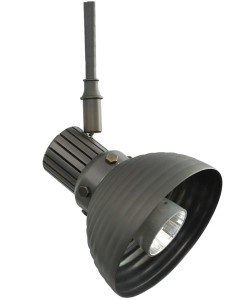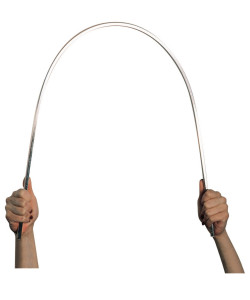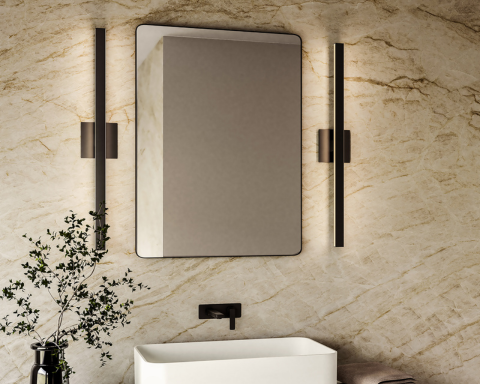Free Ground Shipping on Orders Over $49 Details & Exclusions Excludes Curb Side Delivery (LTL). Lower 48 United States Only.
Aug 13, 2013
How-to Maximize Your Home’s True Potential with Low Voltage Lighting
For the Love of Low Voltage Lighting
Low Voltage Track and Rail Lighting Systems for 2013
Your Guide to Outstanding Low Voltage Lighting Installation 2013
You cannot beat the versatility and design of innovative low-voltage track and rail lighting systems. New compositions and energy-efficient options are extraordinary and may be custom-designed to blend seamlessly with changes in your decorative environment.
Far from the industrial-sized straight runs and bulky fixture heads of the past, new track and rail lighting systems are elegant and balanced to beautifully illuminate both traditional and modern settings.
Top 5 Reasons to Update with Low Voltage Lighting Systems
1. More Economical: Because low voltage lighting systems function on 12 volts of electricity rather than the standard 120 volts, low voltage lighting uses less energy, and smaller low voltage track heads deliver light more efficiently.
2. Easy installation: From colorful and vibrant glass pendants to sleek metallic spot light fixtures, track and rail systems are easy to install and maintain. The monorail system is the most basic and easiest to install; consisting of a single line of electrical cable that may be installed in straight runs or custom designed in a unique configuration.
3. Safer Operation: Low voltage lighting requires a transformer to “step down” the 120-volt standard to a 12-volt system; and, the reduced 12-volt system eliminates the risk of electrical shock. Because of the reduced risk of electrical shock and safer operation, low voltage lighting may incur fewer required inspections.
4. Greater Flexibility: Unlike other ceiling fixtures where a lighting design in required before you begin construction, low voltage track and rail lighting systems provide the flexibility to update your home lighting design as you can afford. You may choose to do one segment at a time, and add to the design as your needs and budget allow.
5. Superlative Lighting Designs: Low voltage track heads and light fixtures are available in a myriad of styles and sizes. They are made to accommodate compact light sources that are as bright as 120-volt bulbs but in a smaller fixture. Most of the bulbs used in low voltage lighting are more than twice as bright as regular incandescent bulbs of the same wattage.
FAQ’s
HOW MUCH WILL IT COST?
-The cost to install low voltage lighting currently runs on average between $150-$220 per fixture. Material and labor costs vary according to hourly labor wage restrictions, specific project size and the number of fixtures needed. It is a good idea to get a few estimates before hiring an electrical contractor for your low-voltage lighting installation. Estimated costs should include all materials, as well as delivery charges for equipment and costs to prepare, protect or repair existing structures. (Permit and inspection fees are usually additional charges that may be involved with certain lighting installations.)
-Low voltage track and rail lights operate on a system equipped with a transformer. Since standard lighting installations run on outlet and junction boxes that provide 120 volts of electricity (in the US and Canada), the transformer serves to “step-down” or decrease the voltage from standard line voltage (120 volts) to low voltage (12 volts).
-Low voltage fixtures, bulbs and dimmers are generally more expensive than line voltage systems due to the transformers that are included as part of the fixture’s electrical construction; Although low voltage installations may be more expensive than line voltage systems, lifetime operating costs are lower due to energy savings and lower maintenance costs.
WHAT TYPE OF LIGHT SOURCE WORKS BEST IN A LOW VOLTAGE TRACK HEAD?
-Although there are some good compact fluorescent lamps that may be used in low voltage track fixtures, halogen bulbs are still the most popular choice.
-Low voltage halogen lamps contain filaments that are shorter and fatter, so the illumination is precise, crisp and luxuriant. These lamps are available in a variety of beam spreads offering over 20 variations in any given wattage, ranging from super narrow spot lights to full-spectrum flood lights.
-The most common lamps or light sources used in low voltage track heads are PAR 36 and MR 16 halogen light bulbs.
CAN I UPGRADE MY TRACK FIXTURES WITH LED (LIGHT EMITTING DIODE) LAMPS?
-LED (light emitting diode) low voltage lamps are compact solid-state light sources that provide cool focused task light. LEDs last 10,000-100,000 hours and use very little electricity. With future production, LED lamps may become more affordable and the standard go-to choice in track and rail systems. *Rather than a transformer, LED bulbs require a “driver” to convert from standard to low-voltage.
With a state-of-the art low voltage system, you may custom design formations with imagination and creativity and the possibilities are endless…
-Use straight runs of track to highlight displays in a gallery or down a corridor.
-Make a design statement and provide the perfect task light with hand-painted low voltage pendant lights over kitchen islands, bath vanities or night tables.
-Highlight the sparkle in crystal and provide accent light to an elegantly set table with low voltage rail lighting.
-Expand your space with hand-bendable rail fit to accommodate rooms with limited ceiling space or rooms where electrical junction boxes are inconveniently located. The beauty of track is that it may be custom measured and easily cut to fit your exact specifications.
*Especially suitable for savvy renovation projects, such as older New York City apartments that may have one junction box in the ceiling: Track and rail lighting configurations can do it all, providing general, task and accent lighting.
-Track lighting systems are even being used to power residential garage space with functional and inviting illumination; Showcase expensive automobiles and provide excellent task lighting to a workbench or hobby station with streamlined track lighting.
Low Voltage Track Systems from Start to Finish
GETTING ON BOARD: YOUR TRACK 7-STEP SYSTEM
- The first step in designing your system is to determine where you want the light and the mood you wish to create. Do you want soft ambient light for general illumination? Or accent lighting to bring out unique features in artwork or textured walls? Would you like to provide task light with decorative pendants?
- Draw a rough sketch of your ideal track or rail lighting system within the dimensions of your space.
- Choose a track or rail system that will complement the décor of your home.
- Calculate the total footage of track or rail you will need and choose the low voltage heads for your system. For best lighting effects and efficiency, there should be no more than one fixture to every foot of track or rail.
- Add up the total wattage of all fixtures on your track or rail system to determine the power source needed. For low voltage track systems you will need either a power feed with a built-in transformer or a remote transformer. Concealing a transformer in a remote location will provide a more streamlined look.
- Power up for peak performance: Your track or rail system can be as large or small as you want with as many track heads as you desire, but only up to 300 watts of power is allowed for each transformer and run of track.So if you have three low-voltage track heads that require 50-watts of power each, you need a transformer with at least 150-watts of power. Leave room to grow on when assigning your power source. If you think you will add to your system later, use a transformer with more power. A dual feed transformer may also be used to increase the total wattage to 600 (300 watts in 2 directions) from a single power source.
- Make the proper connections depending upon the configuration and size of your track or rail system:
-Although, electrically-speaking, track runs must work as separate units, multiple track and rail layouts may be connected to appear as one system. An isolating connector is used to power each section.
-A floating canopy connector may be installed anywhere along the track and covers a junction box while providing power to the system.
-A live end connector may be used if you are running wires directly into the track without using a junction box.
-You may also power the system at any connecting point (straight, angled, T-junction, etc.) where the connector has a power feed entry point.
-A junction box may also be used at any of these power entry points; a canopy cover plate should cover the entry points for aesthetic, as well as safety reasons.
Basic guidelines to ensure safety and effortless performance of low voltage track heads:
-Most track and rail systems are installed directly into the ceiling and mounting hardware should be included.
-Systems that are suspended from the ceiling require adaptable suspension hardware.
-Low voltage track heads are made to slide directly onto the track and repositioned easily. End caps should be included in the installation for a clean finish.
-Low voltage track fixtures may be placed on line voltage track systems by using a track connector with a transformer installed to lower the voltage of the track system.
-Voltage drop: On longer track runs, you may notice a decrease in brightness the farther away the low-voltage head is located from the transformer. With remote transformers, voltage drop is dependent on the number of fixtures on a system, the length of track, and the length and gauge of wire from the transformer to the power feed.
– Be sure to mix and match fixtures within the same systems; check for compatibility when trying to interchange fixtures from different track and rail systems.
-PAR bulbs and MR16 low-voltage halogen are available in a variety of beam spreads. Wide-angle bulbs are great for general illumination; narrow spotlights are good for task and accent lighting. Track head accessories and special lenses may be added for increased directional and colorful effects.
Track or rail systems allow you to create an original lighting design to perfectly illuminate your home. Capitol Lighting offers track and rail lighting systems, accessories and compatible light fixtures from top brands like LBL Lighting, WAC Lighting, Kichler Lighting, Tech Lighting and Wilmette Lighting.
Top Pics include:
Low voltage track and rail systems that twirl, bend and twist are available in choice finishes.
‘
EUROFASE Cable Lighting
Energy-efficient 4-light Design Pro LED Rail Lights from Kichler accommodate installation on the wall or ceiling. They are fully dimmable and Energy Star-rated.
 Industrial-inspired head with proprietary 5.8 watt LED module. It is easily field upgradeable and replaceable similar to a medium-base socket, though it utilizes a dedicated base. The heat sink remains with the fixture minimizing any waste at the end of life. Rotates 360°, pivots 90°.
Industrial-inspired head with proprietary 5.8 watt LED module. It is easily field upgradeable and replaceable similar to a medium-base socket, though it utilizes a dedicated base. The heat sink remains with the fixture minimizing any waste at the end of life. Rotates 360°, pivots 90°.
“Clamps to Wall MonoRail. 18″” long with 3″” high gentle curve. Pivots at head to direct beam. Low-voltage, MR16 lamp of up to 75 watts not included). For Wall MonoRail system only.”
With the latest track and rail lighting innovations, the flexibility to redecorate with light is intrinsic. Adjust your lighting design with ease by adding new track segments or repositioning adjustable fixture heads. Transform your guest room into a nursery with whimsical designer pendants or upgrade your hallway with sleek metallic low voltage track heads.
Low voltage track and rail lighting fixtures are brilliantly engineered to adapt to modifications in your décor and furniture placement; lighting may be reconfigured and beam spreads refocused to highlight artwork and illuminate your home safely and purposefully to bring out the best in a new design scheme.










